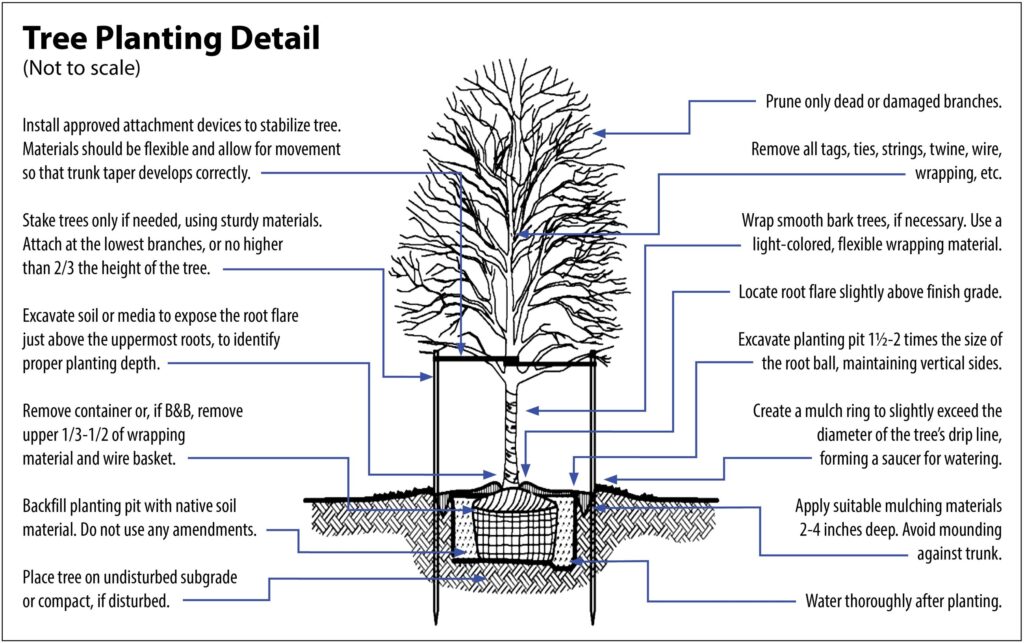When planting a tree or shrub that is grown in a container, do not dig and amend a large hole. The tree thinks it has been transplanted into a larger pot. The roots will grow in the kinder soil and when they reach the surrounding soil, the roots will turn around and keep growing in the “good” area.
Dig your hole the same depth as the container and a few inches wider in diameter of the pot. This will force the roots into the surrounding soil faster, anchoring the tree.
Remove the plant from the pot and gently loosen the roots on the sides and bottom of the root ball. If the roots thick and growing around the ball, you might want to take a utility knife and slice the root ball in four places. You want the roots to start growing out from the container. Place in the hole so the crown (where the stem meets the roots) is about 1 to 1 1/2 inches above the surrounding ground level. This allows water to runoff from the root crown prevent any rot from setting in.
Place the broken-up soil back in the hole. I do not use any amendments like manure or compost mixed in the soil. I might place some slow-release fertilizer mixed in. Gently step on the soil around the plant to remove any air pockets which would kill some of the roots. The tree should stand on its own. If it is planted in a windy area, you might want to stake it.
Lastly, I create a berm (a circular ridge of soil) around the tree to hold the water. Now I water well and place a mulch of wood chips or straw a few inches deep leaving an area around the stem bare. Check the dampness of the soil every week for the first year. The soil 4 to 6 inches should be moist. Do not think lawn sprinklers will keep the tree or shrub watered well. Use a hose with a slow drip during the day or night.
If you are planting a grafted tree, the graft will be above the soil. Older thinking was to bury the graft below the soil for winter protection but the root crown would be buried also. Just make sure the graft is winter hardy. It may say on the label if it is an M27 drawf (which would be hardy). A G65 is hardier but does not have as much dwarfing capability.

